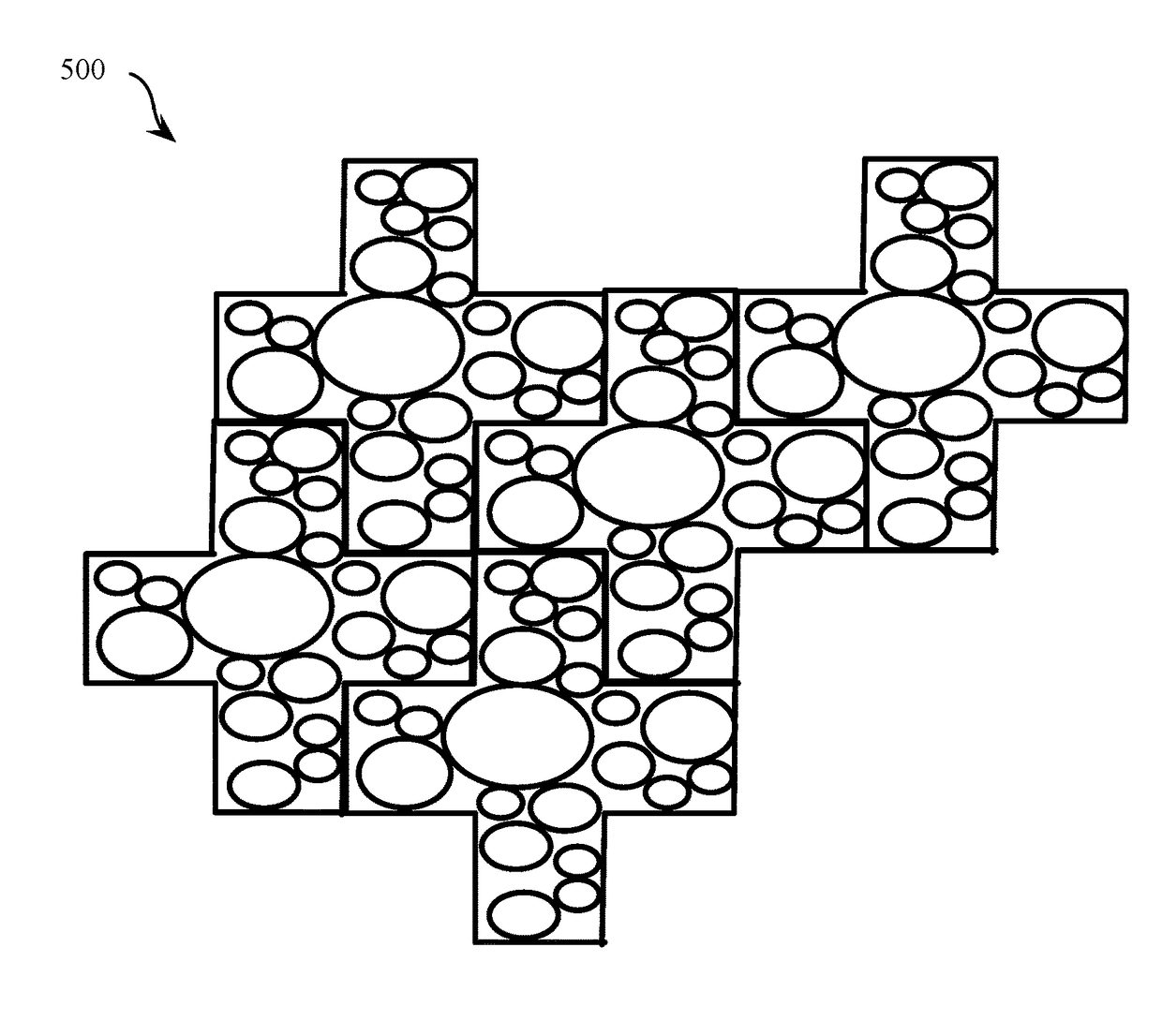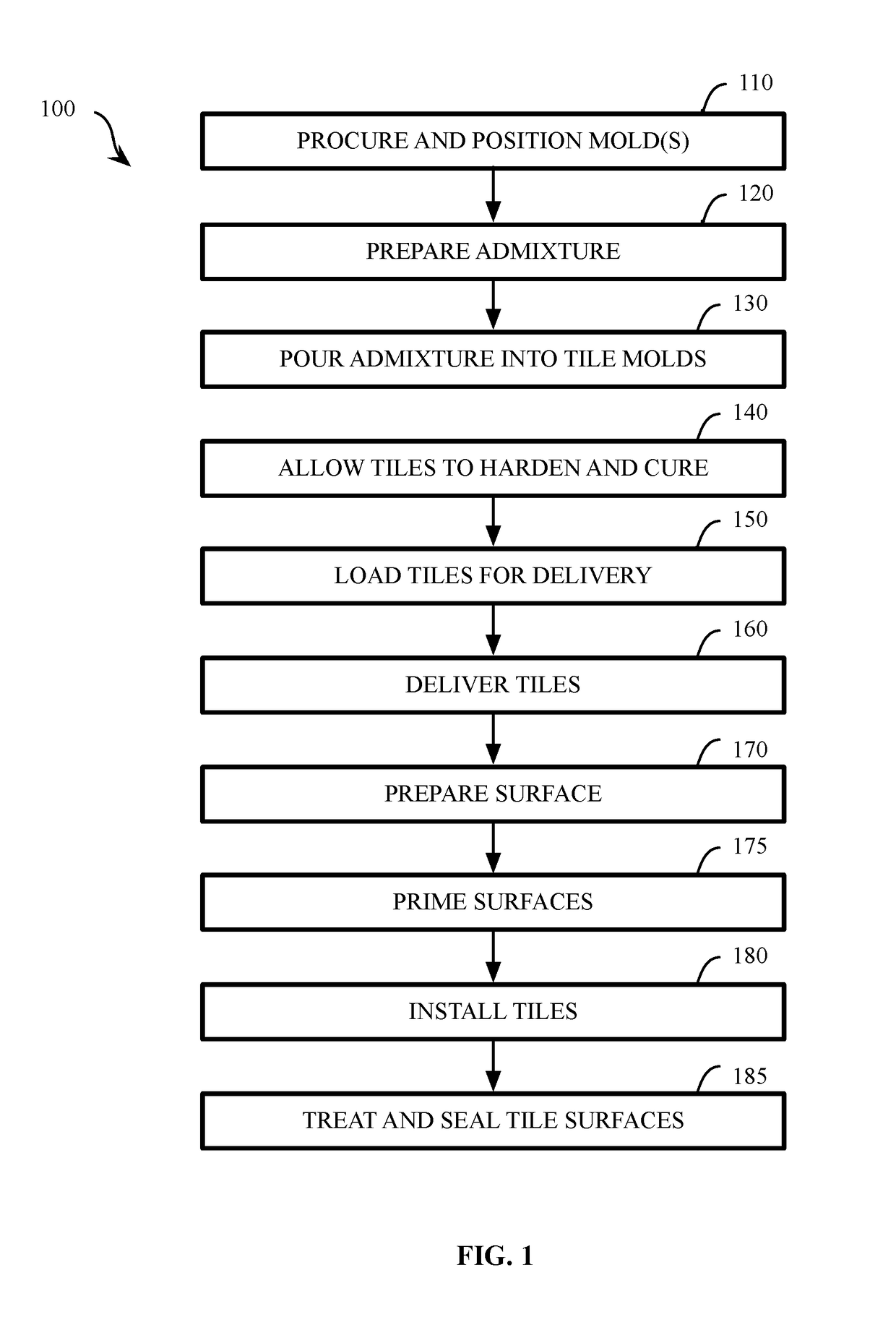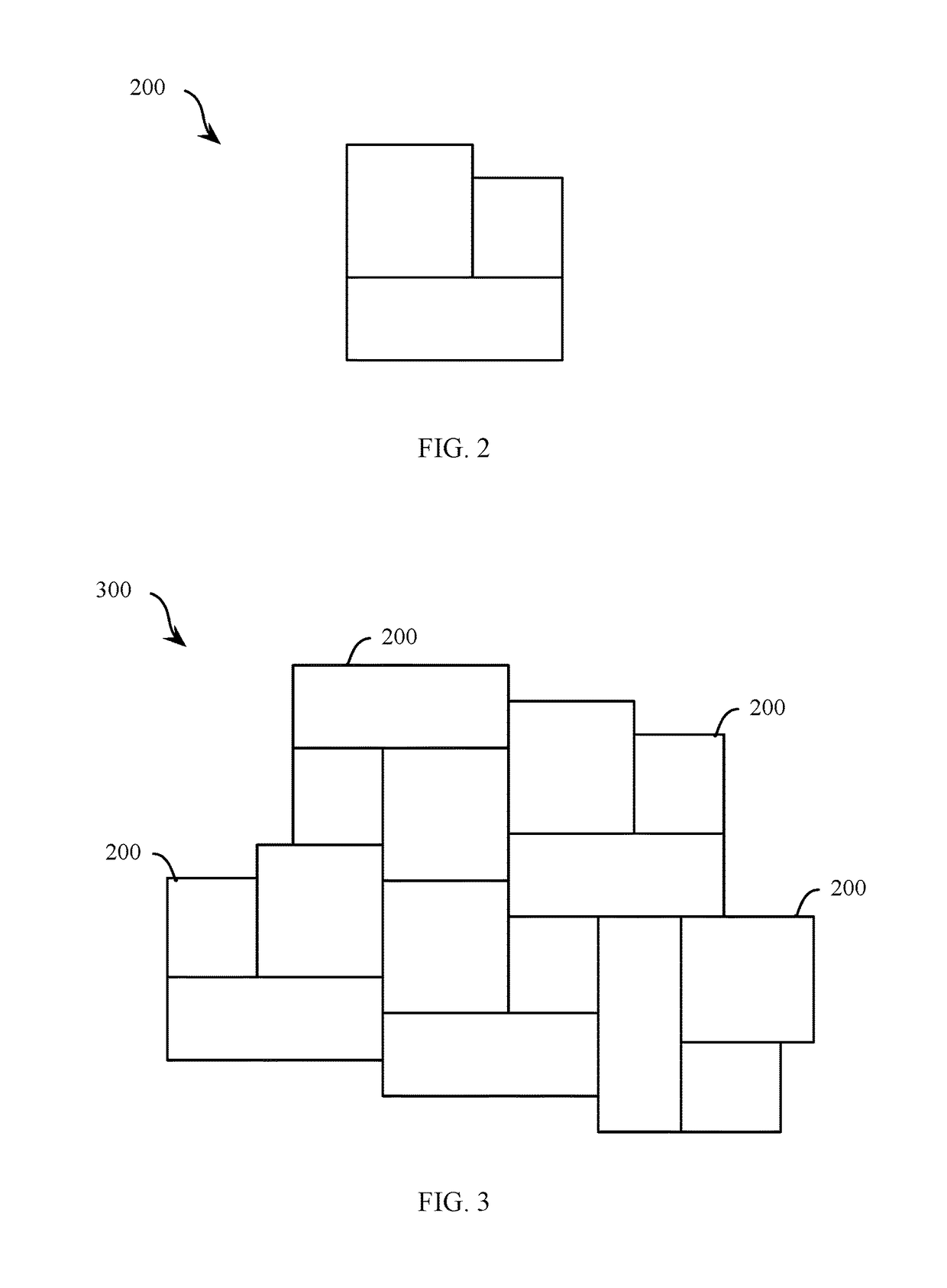System and method for installing tile
a tile and pre-cast technology, applied in the field of construction, can solve the problems of inability to form natural stone texture, prohibitive cost of using natural stone, and inconvenient use of style stamps, and achieve the effect of significantly reducing or minimizing the occurrence of gaps or voids
- Summary
- Abstract
- Description
- Claims
- Application Information
AI Technical Summary
Benefits of technology
Problems solved by technology
Method used
Image
Examples
Embodiment Construction
[0021]A system and method for installing tile includes the use of washers and fasteners. The method involves using washers and fasteners to hold tile in place until it is properly fixed in position. Additionally, the washers and fasteners create a downward pressure on the tiles to help the tiles conform to the surface to which they are applied, thereby significantly reducing or minimizing the occurrence of gaps or voids between the surface and the tiles. Once the tiles are fixed in position, the washers and fasteners are removed and the interstitial spaces or gaps between the tiles are filled with grout.
[0022]Additionally, according to at least one preferred embodiment of the present invention, a variety of tiles may formed from a textured mold with the desired surface appearance, generally mimicking the surface appearance of natural stone or other desired pattern. These cement tiles are most preferably in the range of ¼″- 5 / 16″ thick using a proprietary cementitious mixture poured ...
PUM
| Property | Measurement | Unit |
|---|---|---|
| diameter | aaaaa | aaaaa |
| area | aaaaa | aaaaa |
| depth | aaaaa | aaaaa |
Abstract
Description
Claims
Application Information
 Login to View More
Login to View More - R&D
- Intellectual Property
- Life Sciences
- Materials
- Tech Scout
- Unparalleled Data Quality
- Higher Quality Content
- 60% Fewer Hallucinations
Browse by: Latest US Patents, China's latest patents, Technical Efficacy Thesaurus, Application Domain, Technology Topic, Popular Technical Reports.
© 2025 PatSnap. All rights reserved.Legal|Privacy policy|Modern Slavery Act Transparency Statement|Sitemap|About US| Contact US: help@patsnap.com



